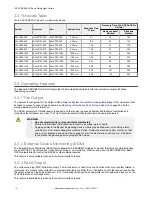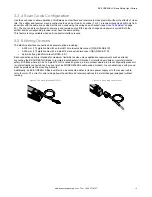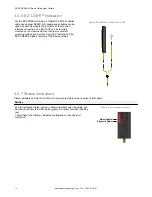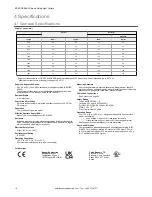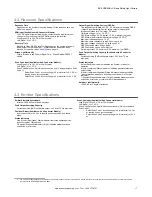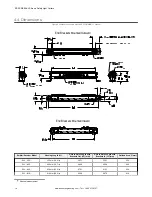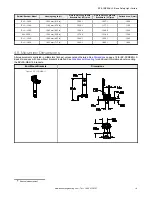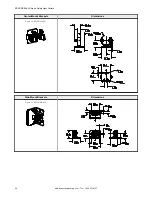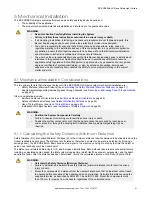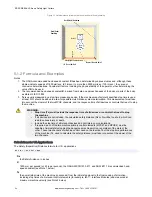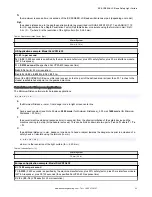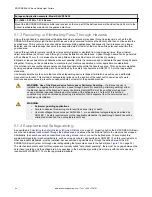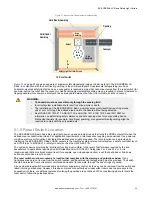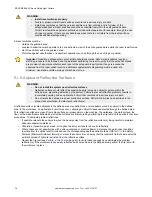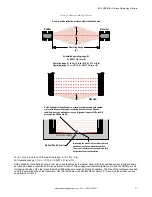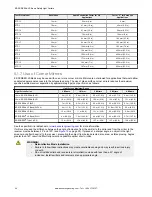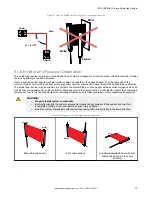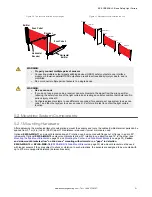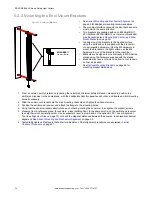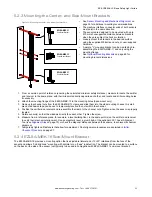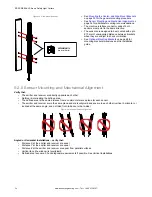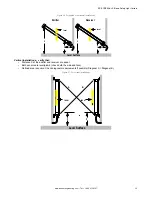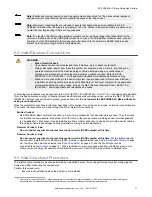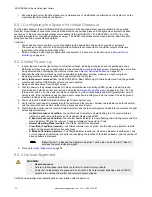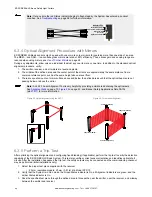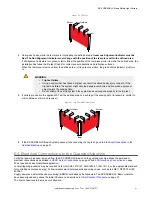
WARNING:
•
Install reset switches properly
•
Failure to properly install reset switches could result in serious injury or death.
•
Install reset switches so that they are accessible only from outside, and in full view of, the
safeguarded space. Reset switches cannot be accessible from within the safeguarded space.
Protect reset switches against unauthorized or inadvertent operation (for example, through the use
of rings or guards). If there are any hazardous areas that are not visible from the reset switches,
provide additional safeguarding.
All reset switches must be:
•
Outside the guarded area
•
Located to allow the switch operator a full, unobstructed, view of the entire guarded area while the reset is performed
•
Out of reach from within the guarded area
•
Protected against unauthorized or inadvertent operation (such as through the use of rings or guards).
Important:
Resetting a safeguard must not initiate hazardous motion. Safe work procedures require a
start-up procedure to be followed and the individual performing the reset to verify that the entire hazardous
area is clear of all personnel before each reset of the safeguard is performed. If any area cannot be
observed from the reset switch location, additional supplemental safeguarding must be used: at a
minimum, visual and audible warnings of machine start-up.
5.1.6 Adjacent Reflective Surfaces
WARNING:
•
Do not install the system near reflective surfaces
•
Reflective surfaces could reflect the sensing beam(s) around an object or person within the
defined area, preventing detection by the system. Failure to prevent reflection problems results in
incomplete guarding and an optical short circuit that could result in serious injury or death.
•
Do not locate the defined area near a reflective surface. Perform the trip test, as described in the
product documentation, to detect such reflection(s).
A reflective surface located adjacent to the defined area may deflect one or more beams around an object in the defined
area. In the worst case, an optical short circuit may occur, allowing an object to pass undetected through the defined area.
This reflective surface may result from shiny surfaces or glossy paint on the machine, the workpiece, the work surface, the
floor, or the walls. Beams deflected by reflective surfaces are discovered by performing the trip test and the periodic checkout
procedures. To eliminate problem reflections:
•
If possible, relocate the sensors to move the beams away from the reflective surface(s), being careful to maintain
adequate separation distance
•
Otherwise, if possible, paint, mask, or roughen the shiny surface to reduce its reflectivity
•
Where these are not possible (as with a shiny workpiece or machine frame), determine the worst-case resolution
resulting from the optical short circuit and use the corresponding depth penetration factor (Dpf or C) in the Safety
Distance (Minimum Distance) formula; or mount the sensors in such a way that the receiver's field of view and/or the
emitter's spread of light are restricted from the reflective surface
•
Repeat the trip test (see
on page 40) to verify these changes have eliminated the problem
reflection(s). If the workpiece is especially reflective and comes close to the defined area, perform the trip test with
the workpiece in place
EZ-SCREEN
®
LS Basic Safety Light Curtain
26
www.bannerengineering.com - Tel: + 1 888 373 6767

